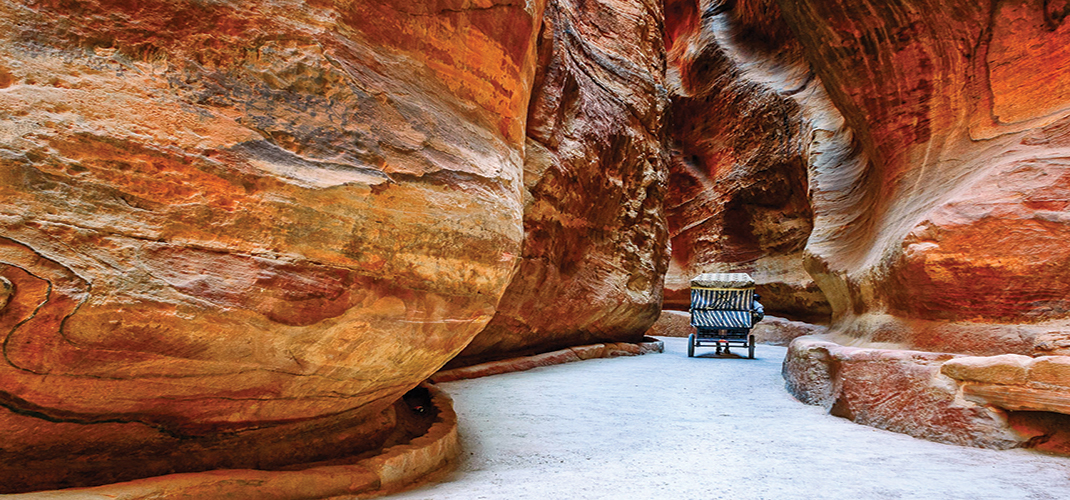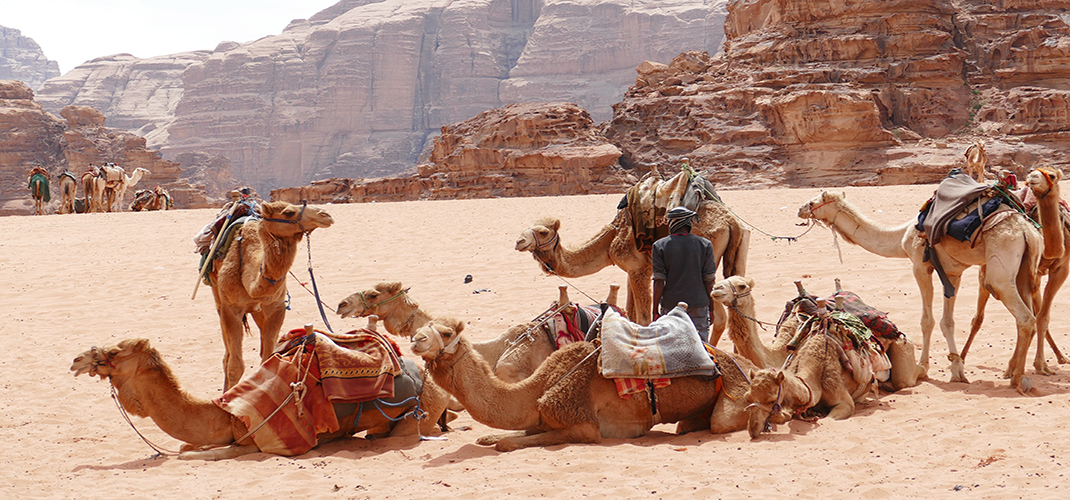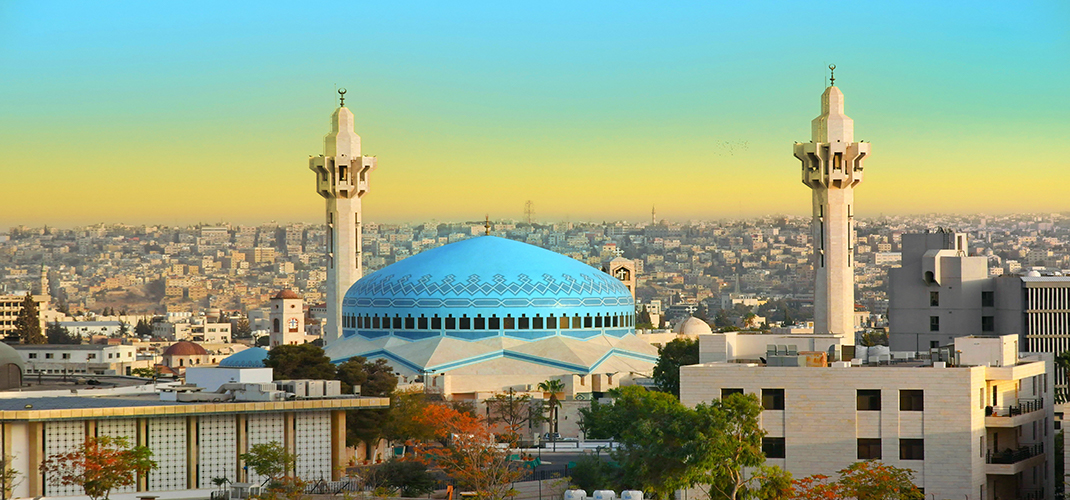Petra

The UNESCO World Heritage Site of Petra, once the capital of the Nabatean Kingdom, dates back to approximately 300 B.C., it is known as the Rose City due to the colour of its pink sandstone cliffs. The Nabataean’s buried their dead in intricate tombs that were cut out of the mountain sides, it had temples, a theatre a colonnaded street and churches. Petra can only be accessed via a narrow canyon called Al Siq. This long, deep, narrow gorge of natural golden beauty soars 80 metres high and can be accessed by foot, cart or camel.
Arabic for Gateway, Bab Al Siq is the main door to the Siq and to Petra. A 1200 metre journey awaits you, with three massive Djinn blocks, which are squared monuments carved out of the rock. Next you will see the 1st Century A.D. Obelisk Tomb, carved out by the Nabataean’s. Above the tomb are four pyramids 'Nafesh' as well as a niche with a statue in sculpture that is a symbolic representation of the five people buried there. Below is the Triclinium, which was once a banqueting hall.
The most famous site in Petra is definitely the Al-Khazneh, known as the Treasury. Originally carved in the 1st Century, Al-Khazneh was a Tomb for a Nabatean King and later used as a Temple. It is now a symbol of Jordan and the most visited tourist site in the country. Seeing the Treasury up front is quite an overwhelming experience as it sits at 43 metre high.
The Monastery of Al-Deir is an 800 stair walk; however this second most famous monument in Petra is worth the climb. The design resembles Al-Khazneh, however it has a more simplified architecture.
The Street of Facades leads from the Treasury to the Outer Siq. There are more than 40 Tombs and houses that were built by the Nabataean’s in a crow step style reminiscent of Assyrian architecture. The Colonnaded Street represents an original Nabataean construction and was refurbished during the period of Roman occupation. It was once one of the principal shopping streets of ancient Petra. At the beginning of The Colonnaded Street, The Nympheum will be on the right side, a half circular public fountain near the junction of Wadi Musa and Wadi al-Mataha. There are six Nabataean columns decorating the façade. On the left of the portico street to the south, there is a set of stairs that leads to a courtyard, which is called the market.
If you want to enjoy some of the most spectacular views over Petra, then a visit to the High Palace of Sacrifice is worth every one of the 100 stone steps. Once reaching the top you will be standing on holy Nabataean ground, where they used to hold religious ceremonies honouring their gods.
The Tomb of Prophet Aaron is the name of the supposed burial place of Aaron, the brother of Moses. It is believed that Moses' brother died and was buried in the Petra area and to commemorate this a 14th Century white domed Mosque stands at the top of Aaron’s Mountain or Jabal Harun.
The Royal Tombs are situated down the hill from the Theatre. To the right, you can see the great massif of Jebel Al Khubtha, which looms large over the valley. Inside its west facing cliffs are some of the most impressive burial places in Petra, known collectively as the “Royal Tombs”. They look particularly stunning bathed in the golden light at sunset. The Royal Tombs can be reached via a set of steps that ascends from the valley floor, near to the Theatre.
The Urn Tomb (The Court) is by far the largest of all the Royal burial chambers. It has a deep courtyard with colonnades on two of its sides. At the top of the façade there are 3 small niches, which are burial chambers. It was later readapted to a Byzantine Church in 446 A.D.
A journey through Petra would not be complete without a camel ride. The Petra Bedouins are like most desert people, extremely humble and generous. To finish off a splendid day in Petra would be to stay around the Monastery and watch the magnificent sunset. Truly one the most beautiful sunsets on earth with the cobblestones turning a shade of rose gold under the setting sun.
The Petra Night Show, runs every Monday, Wednesday and Thursday from 20:30-22:30pm and is a spectacular way to finish your visit and see this ancient rock city by walking from the Siq to the Treasury lit with over 1,500 candles shedding an entirely different view over all the major attractions.





